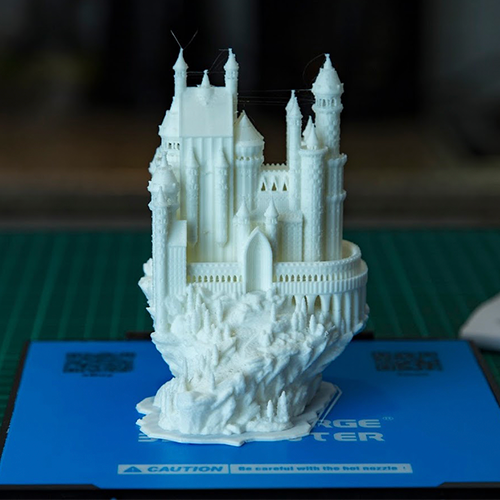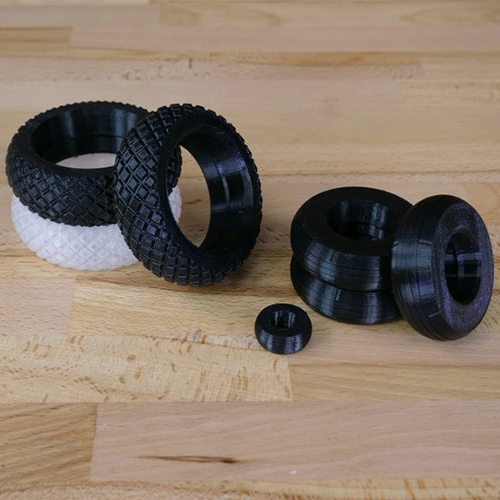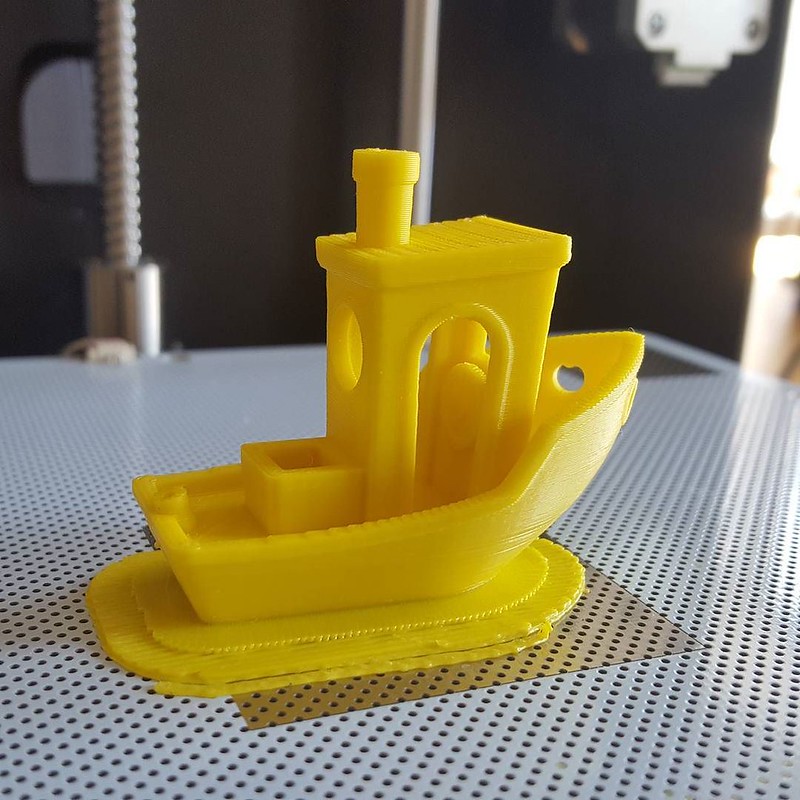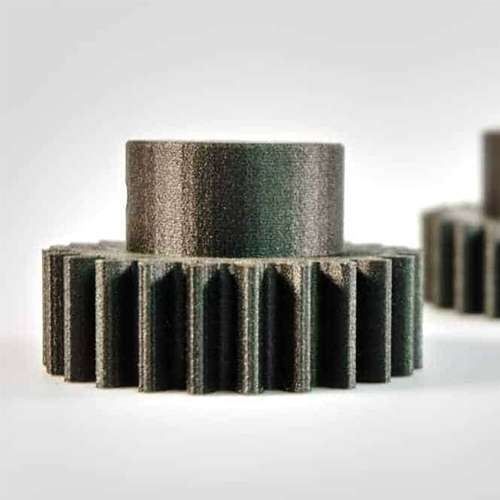GO TO MARKET FASTER
3D Printing with TPU Filament
NE Print Shop
GO TO MARKET FASTER
NE Print Shop
Thermoplastic Polyurethane -TPU filament is a flexible, rubber-like 3D printing material to print soft and durable objects.
TPU filament has excellent shock-absorbing properties and is highly resistant to abrasion. It can be used for printing oil and food containers. TPU is often used to print prosthetics, footwear, and sporting goods owing to its high hardness and flexible nature. 3D printing with TPU can be challenging for beginners as it is stretchy and gets caught up in the extruder gears. You can print wallets, shoes, glasses, and even flexible bottles with TPU filament if you can get it right.
TPU does not warp, and thus a heated bed is optional when printing with TPU. Additionally, a direct drive extruder is more suitable for TPU and will give better results than a Bowden extruder.
Bowden drives have a long path from the extruder to the hot end. And due to the TPU filament’s flexible nature, it might coil up in the extruder gears or the Bowden tube and lead to extrusion-related issues. To get the best extrusion, it is recommended to print TPU with a direct drive extruder. The shorter distance between the extruder and the hot end eliminates any chances of filament coiling up and any print failures. Optionally, if your printer does not support a direct drive extruder, you can select the high-quality Bondtech extruders with your Bowden drive setup.
TPU’s flexible and elastic nature can cause it to compress at high print speeds, and it will jam the extruder and lead to underextrusion or a complete print failure. To avoid extrusion issues, you need to print TPU at slow speeds. You must maintain a consistent rate for walls, infills, solid layers, and infills. A speed of 25-40 mm/s is a good starting point, and you can tune it up further, depending on your 3D printer’s hardware. As mentioned earlier, a direct drive setup will let you print faster than a Bowden drive system.
As mentioned earlier, TPU is a flexible filament. If the filament spool is not moving freely, the TPU will stretch when the extruder pulls the filament. It will cause underextrusion and result in poor print quality. You need to reduce the resistance from the filament spool to the extruder as much as possible. You can try placing the filament spool on the top of your printer to achieve this. It reduces the tension on the filament and decreases the chances of stretching. Additionally, you can use a filament spool mount with a bearing to reduce rolling friction and smoothen out the filament delivery.
TPU is highly reactive to sudden speed and direction changes. A high retraction speed or distance might result in filament coiling up in the extruder gears and jamming it up. You can disable the retraction entirely and then work your way to fine-tuning the settings. It will help you to calibrate your retraction settings perfectly, eliminating any chances of print failures or stringing issues.
To reduce the amount of retraction required and prevent filament jams, you need to optimize the print head travel paths. It will keep the print head within the print area, making minimal travel movements and keeping any strings within the model itself. In Cura, you can turn on the “Combing Setting” to keep the extruder within the print parameters. Similarly, each slicer has its settings to help you achieve this.
You will need a low feed rate when printing at low layer heights. It will result in better print adhesion and fewer chances of print failures.
If you’re designing a part that needs to be fit over another object, it is better to include a negative tolerance in the design. The negative tolerance will lead to a snug fit and ensure that the flexible part can stretch easily and fit over the solid object.
A raft needs a high material feed rate, leading to extruder jamming issues. It is better to avoid any rafts and ensure a good bed adhesion via PVA glue stick or the painter’s tape.
A high infill percentage will lead to a rigid and less flexible 3D printed part. If you need your print to have good flexibility, you need to reduce the infill.
You need to store the filament in an air-tight sealed container with desiccant in it. If you find bubbles or filament oozing from your nozzle, the filament has most likely absorbed moisture. You will need to bake it in an oven to dry it thoroughly.
TPU filament is tricky and challenging for beginners. But, if you can dial down the print settings and ensure slow print speeds, it can be fun to create objects with TPU.
It is highly flexible, has good impact resistance, and can be used as a vibration dampener to absorb shocks. Its versatility makes it suitable for printing various objects from shoes and sneakers to protective gearing and prosthetics.
TPU filament has high strength, and it varies depending upon its shore hardness. You will have to look at the particular manufacturer’s technical datasheet to know the exact properties of your filament roll.
While it is not highly hygroscopic, it will absorb moisture you need to store in dry conditions to ensure good print quality.
TPU filament is suitable for printing flexible items that need soft, durable, and have good mechanical properties.
You can buy TPU directly from Amazon. Some well-known manufacturers like Ninjatek, Filamentum, and Polymaker make some of the best flexible filaments.
Yes. You can vary its flexibility by altering the polymer composition of the TPU material.
You can place the TPU filament in a food dehydrator or a filament dryer at 65 °C for about 4-5 hours.
TPU is a non-toxic filament but releases harmful fumes during the printing process. You need to ensure good ventilation and an air filtration system to prevent long-term health damage.
TPU filament can last for years if you store it in proper conditions.




